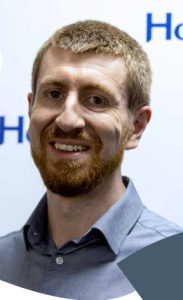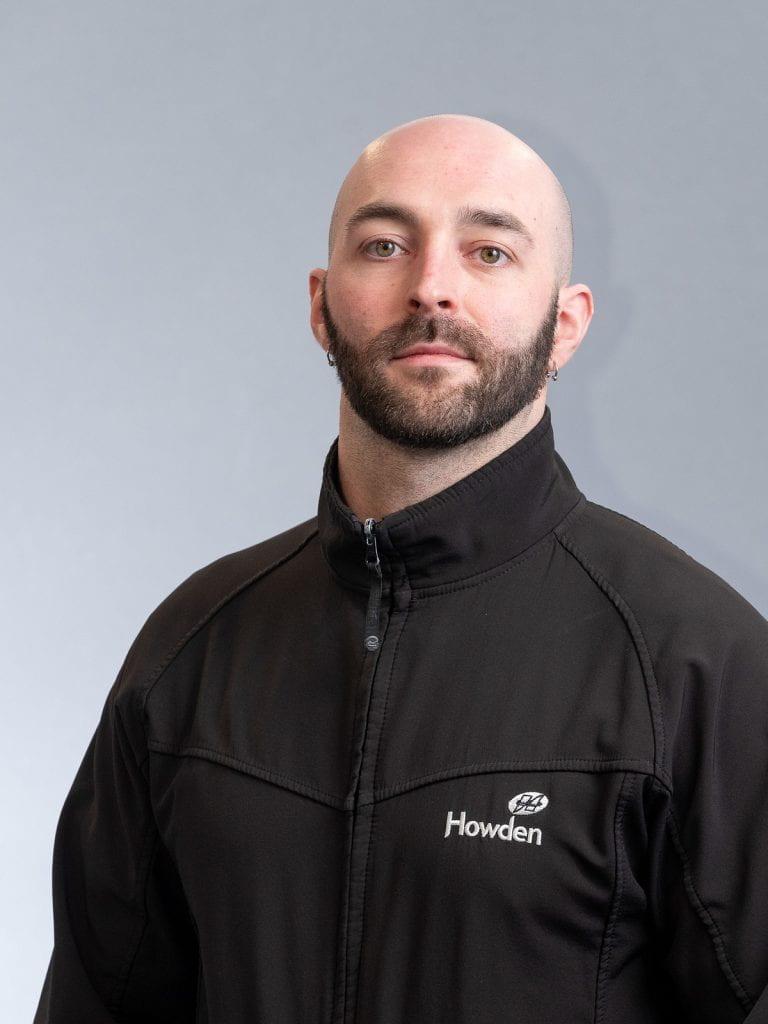This research is designed to address the future of rotating compression technologies by developing methods to reduce energy consumption and reliability in order to respond to the short, medium and long-term development strategy of the industrial sponsor, Howden Compressors, a UK-based world-leader in fluid handling technologies.
20% of world energy is used for compression in refrigeration, air-conditioning, process gas and air handling systems. The limit to improve efficiency of these systems greatly depends on leakage losses through the gaps between rotating and stationary elements. Conventional approaches to minimize leakage gaps often lead to reliability issues due to thermal expansion of elements – thus alternative solutions are required to minimize losses and reduce costs. The core of this research is to fully understand the flow-heat-solid interaction in the leakage gaps and to develop novel rotating elements of larger capacities, self-regulating leakages and easy manufacturing to meet targets for reduction of compressors energy consumption. The key innovation of this research lies in the development of experimental and numerical methods to fully understand complex relationship of flow-heat-solid in gaps and the design of compressor elements with integrated mechanisms and sensor systems to remotely monitor and maximize efficiency without compromising on reliability.
The major expected outcomes are three demonstrator systems:
1. Test facility and validated numerical methods of heat-flow-solid interactions in clearances;
2. Scaled-down compressor prototype with novel rotor profiles and smart clearance management system;
3. Industrial prototype with integrated remote monitoring and self-regulating systems for minimization of energy consumption and increased reliability.
Apart of Howden and City, University of London, all industrial and academic sectors which deal with oil-free rotating machines, such as power recovery systems, food and pharmaceutical industries, vacuum pump applications and others will benefit from the knowledge, developed methods and devices built by this project. The UK public at large will benefit from the lower carbon footprint of these smart energy efficient fluid handling systems leading toward the net zero emission initiative and the wealth-creation with new jobs stimulated by this innovation.
Phase 1: Conjugate heat transfer in leakage gaps
WP1: Development of the roots blower test rig with the test equipment suitable for temperature/ flow measurements at high temperatures and pressures.
Deliverable 1: Operational optical test rig
WP2: Extensive experimental investigation of the leakage flow velocities and temperatures in the clearance gaps of the roots blower.
Deliverable 2: Test results for understanding physics of CHT in leakage gaps and CFD validation
WP3: High fidelity calculation of conjugate heat transfer and solid-fluid interaction in leakage flows using existing in-house grid generation methods.
Deliverable 3: CFD predictions.
WP4: Full validation of results based on WP3 results, with development of a new modelling software for performance and reliability analysis.
Deliverable 4: Full understanding of flow-heat-solid interaction in clearance gaps.
WP5: Establishment of a unique information platform using DDS, integrating data from WP2 tests and algorithms from WP3 validated in WP4 and creating instructions for data collection for control of efficiency/reliability.
Deliverable 5: DDA monitoring system.
Phase 2: Efficient and reliable rotating prototype machine with clearance control
WP6: PhD study on development of a measurement system for monitoring of clearances in rotating machinery.
Deliverable 6: PhD and the measurement system for monitoring of clearances
WP7: Create up to 3 novel concepts of leakage flow control in rotating machines, including new profile shapes, materials, surface quality and secondary flows. Based on the outputs from WP4 and WP6.
Deliverable 7: Concepts for control of efficiency and reliability
WP8: Specify, design and develop the hardware prototype machine able to integrate all three developed concepts of leakage flow control methods and installation of the rig at City. Based on WP6;
Deliverable 8: Prototype test rig
WP9: Integration of the DDA system into the prototype with the novel sensor system for monitoring gaps based on WP5 and WP6;
Deliverable 9: Fully operational smart prototype machine in the test rig
WP10: Extensive and rigorous testing of the three concepts with special attention to efficiency and reliability of each. Implementation of any required changes.
Deliverable 10a: Tested and selected optimal concept of a smart efficient machine.
Deliverable 10b: Extensive report on the most efficient leakage/reliability control option.
Phase 3: Smart efficient commercial screw machine
WP11: City and HOWDEN define specifications for the commercial smart efficient screw machine to be prototyped and tested by Howden based on reports from WP10.
Deliverable 11: Specification for the commercial machine
WP12: Design and development of a smart efficient screw compressor with Howden and Holroyd, integrated with DDA system for monitoring and control, aiming to meet both the efficiency requirements and the reliability targets.
Deliverable 12: Design of a commercial machine
WP13: Manufacture all elements of the smart efficient screw machine package and Install it in Howden. This includes; rotor manufacturing, commercial prototype manufacturing, DDA system manufacturing, test rig manufacturing and installation;
Deliverable 13: Fully equipped test rig with a commercial machine prototype
WP14: Extensive and rigorous performance testing of the commercial prototype developed in WP12 and WP13 including testing of control strategies and extreme operation conditions.
Deliverable 14: Fully tested and validated commercial prototype
WP15: Extensive feasibility study on the application and benefits of this novel smart efficient and reliable screw machine.
Deliverable 15: Final guidelines for future of new smart efficient and reliable rotating machines
WP16: Project management and administration including:
- Contracting
- Recruitments
- Financial management and administration
- Reporting
- Dissemination

 Professor Ahmed Kovacevic
Professor Ahmed Kovacevic Aleksander Krupa
Aleksander Krupa Dr. Billy Milligan
Dr. Billy Milligan Donald Lawson
Donald Lawson Dr. James Ure
Dr. James Ure Dr Sham Rane
Dr Sham Rane Thibaud Plantegenet
Thibaud Plantegenet Neeraj Bikramaditya
Neeraj Bikramaditya Craig Anderson
Craig Anderson Anurag Kishan
Anurag Kishan  Emma Fogg
Emma Fogg Anderson Leao
Anderson Leao Dr. Manoj Heiyantuduwa
Dr. Manoj Heiyantuduwa Thibault Tam
Thibault Tam Brijeshkumar Patel
Brijeshkumar Patel 
















Recent Comments